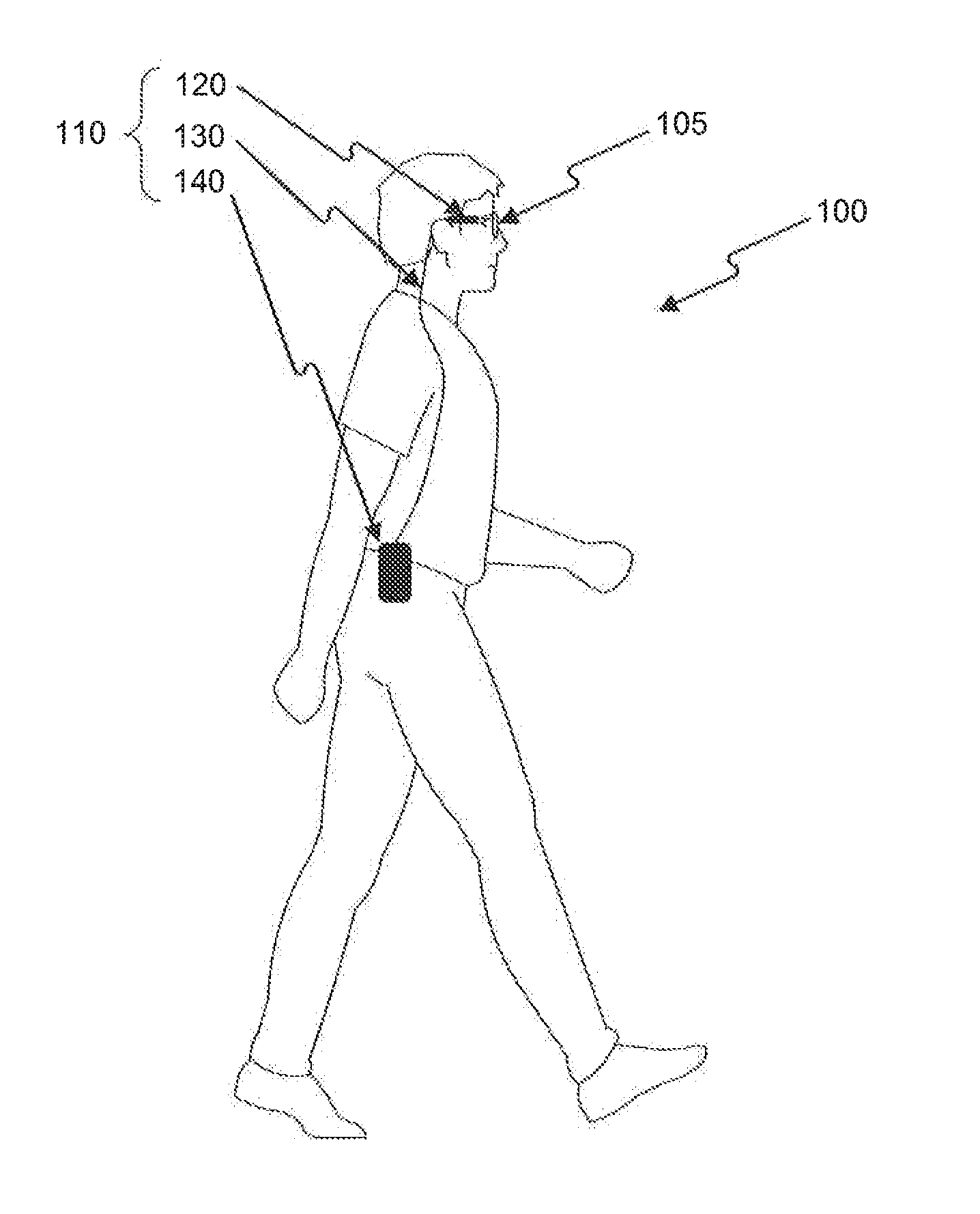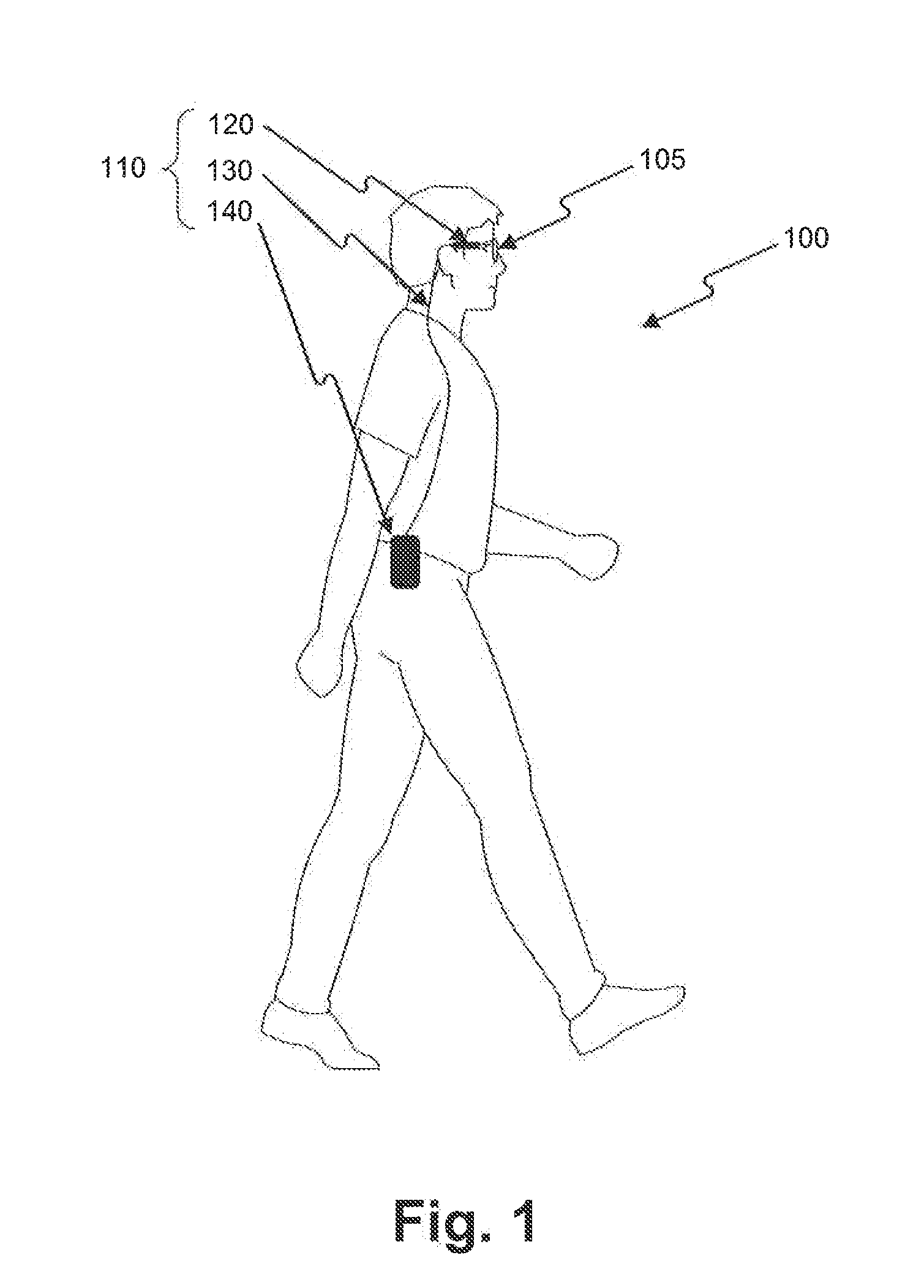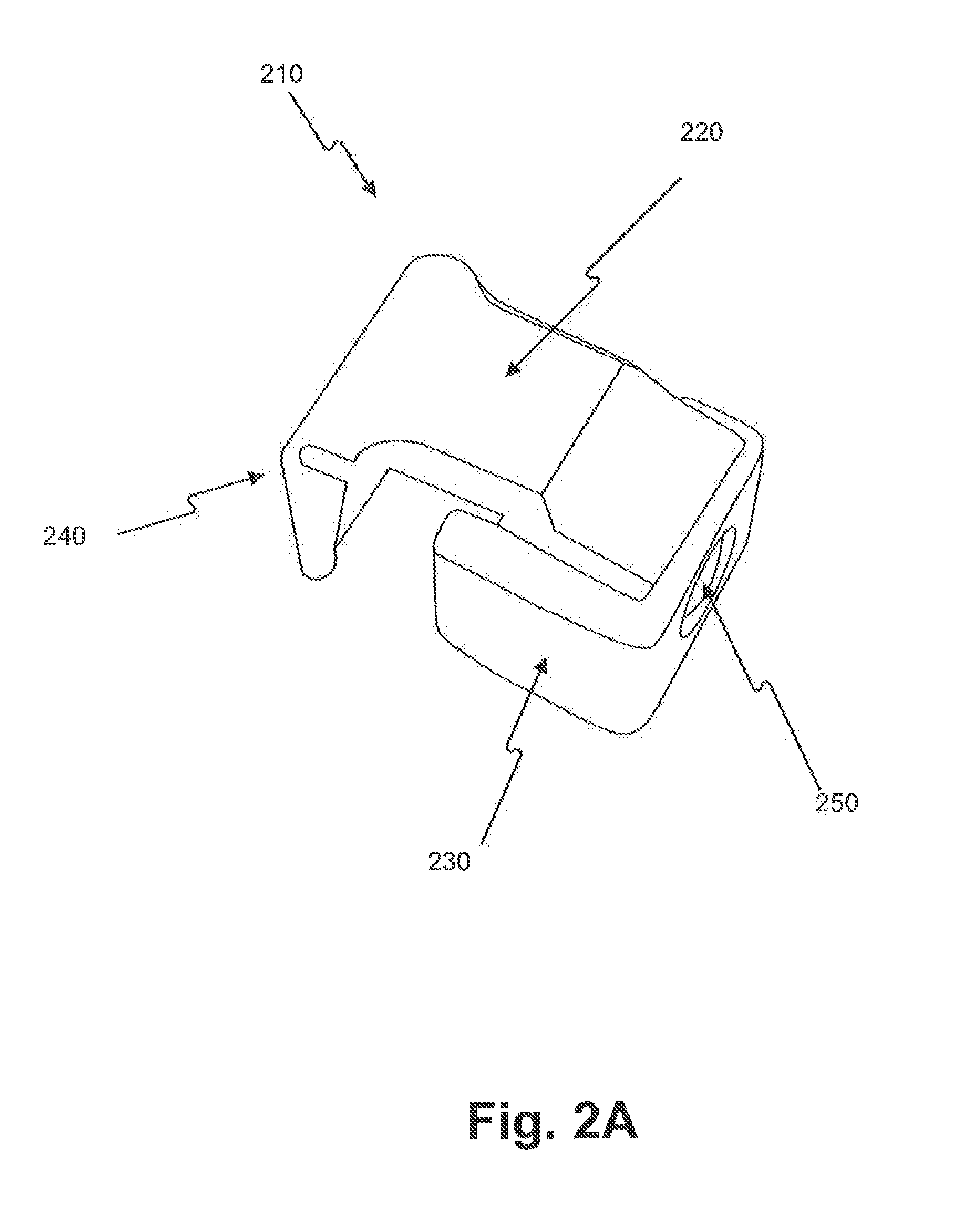Apparatus and method for hierarchical object identification using a camera on glasses
- Summary
- Abstract
- Description
- Claims
- Application Information
AI Technical Summary
Benefits of technology
Problems solved by technology
Method used
Image
Examples
first embodiment
[0073]FIG. 5A is a block diagram illustrating the components of apparatus 110 according to a Specifically, FIG. 5A depicts an embodiment in which apparatus 110 comprises sensory unit 120 and processing unit 140, as discussed in connection with, for example, FIG. 1. Furthermore, sensory unit 120 may be physically coupled to support 210.
[0074]As shown in FIG. 5A, sensory unit 120 includes feedback-outputting unit 340 and image sensor 350. Although one image sensor is depicted in FIG. 5A, sensory unit 120 may include a plurality of image sensors (e.g., two image sensors). For example, in an arrangement with more than one image sensor, each of the image sensors may be face a different direction or be associated with a different camera (e.g., a wide angle camera, a narrow angle camera, an IR camera, etc.). In other embodiments (not shown in the figure) sensory unit 120 may also include buttons and other sensors such as a microphone and inertial measurements devices.
[0075]As further show...
second embodiment
[0084]FIG. 5B is a block diagram illustrating the components of apparatus 110 according to a In FIG. 5B, similar to the arrangement shown in FIG. 5A, support 210 is used to couple sensory unit 120 to a pair of glasses. However, in the embodiment shown in FIG. 5B, sensory unit 120 and processing unit 140 communicate wirelessly. For example, wireless transceiver 530A can transmit image data to processing unit 140 and receive information to be outputted via feedback-outputting unit 340.
[0085]In this embodiment, sensory unit 120 includes feedback-outputting unit 340, mobile power source 510A, wireless transceiver 530A, and image sensor 350. Mobile power source 510A is contained within sensory unit 120. As further shown in FIG. 5B, processing unit 140 includes wireless transceiver 530B, processor 540, mobile power source 510B, and memory 520.
third embodiment
[0086]FIG. 5C is a block diagram illustrating the components of apparatus 110 according to a In particular, FIG. 5C depicts an embodiment in which support 210 includes image sensor 350 and connector 550B. In this embodiment, sensory unit 120 provides functionality for processing data and, therefore, a separate processing unit is not needed in such a configuration.
[0087]As shown in FIG. 5C, sensory unit 120 includes processor 540, connector 550A, mobile power source 510, memory 520, and wireless transceiver 530. In this embodiment, apparatus 110 does not include a feedback-outputting unit. Accordingly, wireless transceiver 530 may communicate directly with a hearing aid (e.g., a Bluetooth® hearing aid). In addition, in this embodiment, image sensor 350 is included in support 210. Accordingly, when support 210 is initially mounted on glasses 105, image sensor 350 may acquire a set aiming direction. For example, a camera associated with image sensor 350 may be installed within support...
PUM
 Login to View More
Login to View More Abstract
Description
Claims
Application Information
 Login to View More
Login to View More - R&D
- Intellectual Property
- Life Sciences
- Materials
- Tech Scout
- Unparalleled Data Quality
- Higher Quality Content
- 60% Fewer Hallucinations
Browse by: Latest US Patents, China's latest patents, Technical Efficacy Thesaurus, Application Domain, Technology Topic, Popular Technical Reports.
© 2025 PatSnap. All rights reserved.Legal|Privacy policy|Modern Slavery Act Transparency Statement|Sitemap|About US| Contact US: help@patsnap.com



